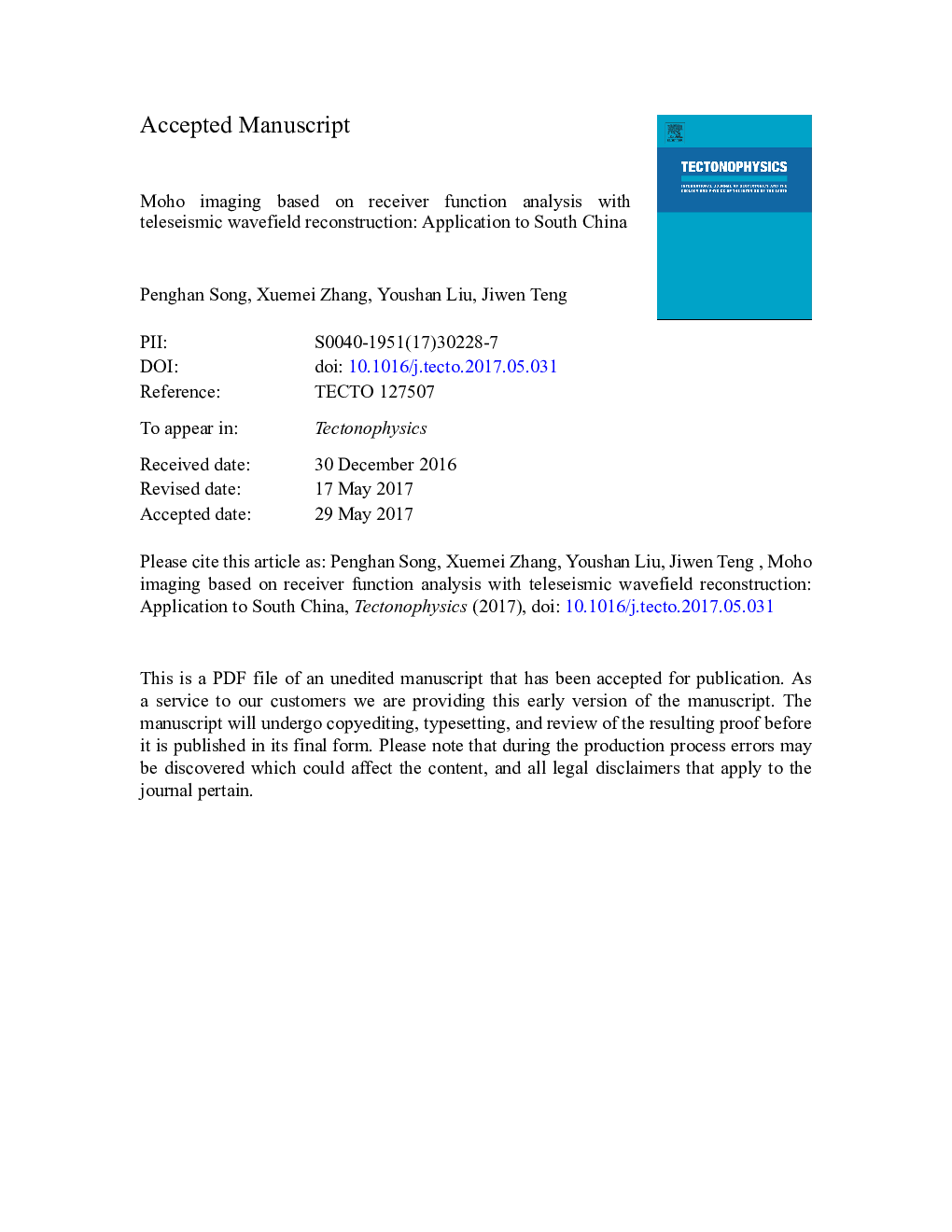| Article ID | Journal | Published Year | Pages | File Type |
|---|---|---|---|---|
| 8908894 | Tectonophysics | 2017 | 61 Pages |
Abstract
A detailed and reliable Moho structure can improve our understanding of the tectonic evolution of crust and mantle. Most researchers directly interpolate the imaging results of receiver functions (RFs) from the sparse stations to obtain a continuous Moho image. However, the interpolation process is usually not robust because of the sparse and irregular geometry of seismic networks. In light of the approximate plane-wave feature of the teleseismic wavefront, we introduce the Radial Basis Function (RBF) technique, a high-precision interpolator with strong adaptability, into teleseismic wavefield reconstruction. Then, we use the reconstructed wavefield to image the Moho structure beneath South China with RF analysis. Compared to the conventional H-κ stacking methods, the Moho that is obtained through this reconstructed wavefield exhibits more details and shows greater consistency to the tectonic provinces. The Moho depths beneath South China gradually shallow from ~ 50 km at the Yangtze Block (YB) in the northwest to ~ 25 km to the southwest of the Cathaysia Block (CB). The Vp/Vs ratio at the YB is ~ 1.80, decreasing to ~ 1.57 at the Jiangnan Orogen, and then increasing to ~ 1.70 at the CB. Obviously varying Moho depths and Vp/Vs ratios in both the Ganjiang Fault (GF) and Tancheng-Lujiang Fault (TLF) regions is observed, which indicates a great similarity in the deep tectonic environment of the GF and TLF. The mantle corner flow under South China is suspected to invade into the interior of the Yangtze Craton. Teleseismic wavefield reconstruction, as a pre-processing technique, can effectively improve the imaging quality of RF analysis.
Keywords
Related Topics
Physical Sciences and Engineering
Earth and Planetary Sciences
Earth-Surface Processes
Authors
Penghan Song, Xuemei Zhang, Youshan Liu, Jiwen Teng,
